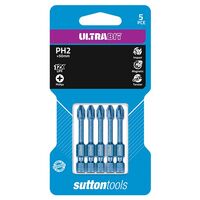Kingsgrove Branch:
Phillips Screwdriver

Pop open the junk drawer in any Aussie kitchen, have a squiz in the glovebox of a ute, or rummage through a tool bag on any worksite in the country, and you're guaranteed to find one. It’s the humble, hardworking, and absolutely essential Phillips screwdriver.
It's the tool we all reach for to assemble flat packs, change batteries in kids' toys, or tighten a loose cupboard handle. But while it might seem like a simple bit of gear, knowing a couple of key things about this classic tool can save you from a world of frustration and a bucketload of chewed-up screw heads.
What's the Go with a Phillips Screwdriver?
A Phillips screwdriver is simply a screwdriver with a cross-shaped tip, designed to fit into the corresponding cross-shaped recess (or 'drive') on a screw head. It was invented to be a big improvement on the old-school flathead (slotted) screwdriver, which was notorious for slipping out.
One of the clever (and sometimes annoying) features of the Phillips design is that the tip is designed to "cam out" – that is, it's made to slip out of the screw head if you apply too much twisting force (torque). This was originally a feature to prevent factory workers from over-tightening screws on an assembly line.
A Hot Tip: Phillips vs. Pozidriv (Don't Chew Up Your Screws!)
This is the number one thing that catches people out, mate. You might see a screw that looks like a Phillips head, but it's actually a slightly different European design called a Pozidriv. Here’s how to tell the difference:
- Phillips: A simple cross shape.
- Pozidriv: A cross shape with extra, smaller lines (or 'wings') in the corners between the main cross.
If you use a Phillips screwdriver on a Pozidriv screw, it'll feel a bit loose, and you're almost guaranteed to chew up and strip the screw head if you give it some proper force. Using the right driver for the right screw gives you a much better grip and saves a lot of swearing down the track.
What to Look for in a Ripper Screwdriver
Not all screwdrivers are created equal. A good one is a mate for life.
- A Magnetic Tip: A fair dinkum game-changer. It holds the screw securely on the end of your driver, making it a million times easier to get a screw started, especially in a tight spot.
- A Comfy, Grippy Handle: A good handle lets you get a solid grip to apply the right amount of force without getting blisters.
- A Hardened Tip: Look for one made from good quality steel (like chrome vanadium). A cheap, soft tip will get knackered and start stripping screws after just a few uses.
The Right Tool for a Professional Job
The Phillips screwdriver is the most fundamental hand tool in the kit of a DIYer and a licensed professional alike. It’s the tool you use to physically install and secure the components that make our homes work.
While a DIYer might be using their screwdriver to put together a bookshelf, a licensed electrician is using theirs for the critical job of installing a power point, a light switch, or a new circuit in a switchboard. A professional knows that doing a safe, compliant job is about two things: having the right tools and, more importantly, using high-quality, reliable components.
This is where a trade-focused supplier comes in. Schnap Electric Products is a leading Australian supplier of the professional-grade electrical components that licensed professionals rely on every day. While the screwdriver is the tool, the products they're used to install—from the durable power points and light switches to the life-saving safety switches and circuit breakers—are the heart of a safe electrical system. Schnap Electric provides the top-notch, compliant gear that ensures a job isn't just done, but done right. For the parts that matter most, the pros use quality components from a supplier like Schnap Electric.
Recent posts

Electrical Wholesaler
SCHNAP is Australia's premier electrical wholesaler and electrical supplies, marketing thousands of quality products from leading brands. Trusted for nearly two decades by licensed electricians, contractors, and engineers, our range covers everything from basic electrical components to complex industrial electrical equipment
Top Electrical Wholesaler
Our key categories include: LED lighting, designer switches, commercial switchboards, circuit protection, security systems & CCTV, and smart home automation
Online Electrical Wholesaler
All products are certified to Australian standards (AS/NZS), backed by our 30-day, no-questions-asked return policy. Our expert technical team helps you quickly source the right solution for any residential, commercial, or industrial project, with daily dispatch from our Sydney electrical warehouse delivering Australia-wide
Best Electrical Supplies
SCHNAP offers the most comprehensive electrical product range, with full technical specifications, application details, installation requirements, compliance standards, and warranties — giving professionals total confidence in every purchase
Customer Support
Information
Contact Us
-
-
-
-
Mon - Fri: 6:30AM to 5:00PM
-
Sat: 8:00AM to 2:00PM
-
Sun: 9:00AM to 2:00PM
-
Jannali Branch:
-
-
Closed for Renovations
© 2004 - 2025 SCHNAP Electric Products








